When I started woodworking, most of my projects were built out of white pine found in the local home improvement center. Why not? It was cheap, plentiful and easy to work.
But, after a while, I was told by other woodworkers that I should never – and I mean NEVER – use p-p-p-p- domestic conifers. After all, woodworking is all supposed to be about the hardwoods, right?
Well, not so fast. While it’s maybe not appropriate for every project, there are plenty of times when pine is perfectly fine to work with
First, let’s talk about pines. There are lots of species of pines out there. Loblolly pine, lodgepole pine, ponderosa pine, longleaf pine, eastern white pine… the works. When it comes to pines, though, most fall into one of two categories – white or yellow.
White pines typically grown in the more northern climates, while yellow pines tend to grow farther to the south. Driving through the highways of Florida, you can see vast stands of yellow pines as far as the eye can see. In fact, the name of the county I live in – Pinellas – comes from the Spanish word for Point of Pines.
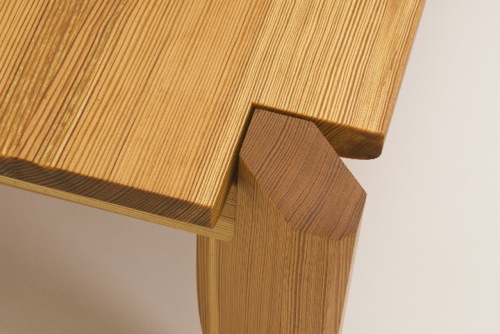
While I use white pine from time to time (and love it), my favorite pines are of the southern yellow variety. They have a very pronounced grain pattern, and I know that turns some folks off. But, for me, I don’t mind it at all.
I have used it for furniture, such as this raised panel blanket chest I built for my bedroom. The piece is as solid as the day I built it, and even with a full load of stuff in it, it can carry a bunch of weight with no issues. The details on the raised panels came out crisply, and with a coat of amber shellac and some Danish oil on it, I think it has that classic southern furniture look.
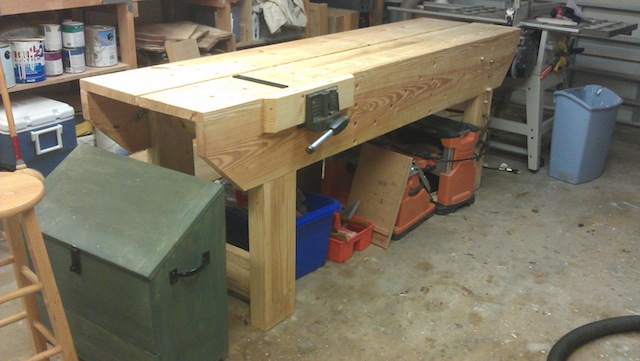
My workbench was built using southern yellow pine as well. I know that when most folks build their benches, they source some gorgeous hardwoods so the bench will stand the test of time. But, as Chris Schwarz pointed out in his workbench book, southern yellow pine is plenty strong for the purpose. And, as Mike Siemsen of the Mike Siemsen School of woodworking pointed out about his bench – if you accidentally drop the project you are working on, would you rather have the workbench or your project get dinged up?
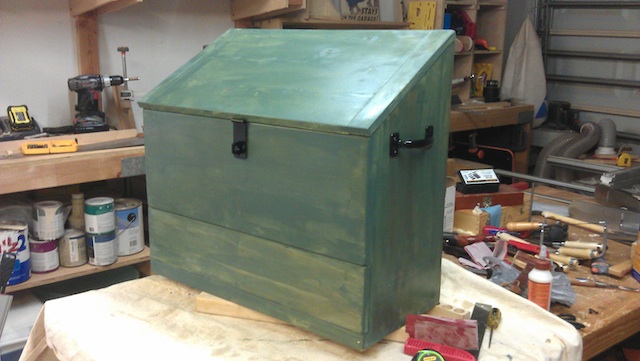
My Dutch Tool Chest is another example of pine’s versatility. Chris Schwarz pointed out that pine’s characteristics – strength and light weight – make it ideal for tool box building. I cut dovetails into the base, and that sucker is holding together nicely, no matter how many times I haul it out to places.
Now, where do I get my southern yellow pine for building? Would you believe me if I told you in the construction lumber area of my local home improvement center?
Yes, the blanket chest I had built was made of resawn 2 x 8s. I cut them, then stickered them for a week to let them acclimate to my shop. In the ten plus years since I built the piece, I haven’t noticed any warping, cupping or twisting.
So, if you have turned your nose up at pine in the past, maybe it’s time to take another look at it for your projects. You might just be pleasantly surprised by what you find.

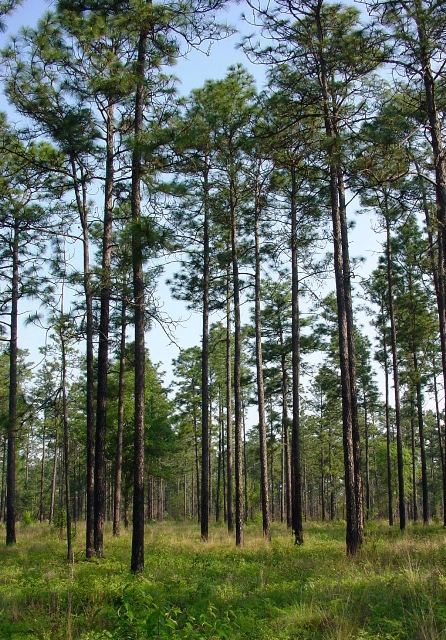
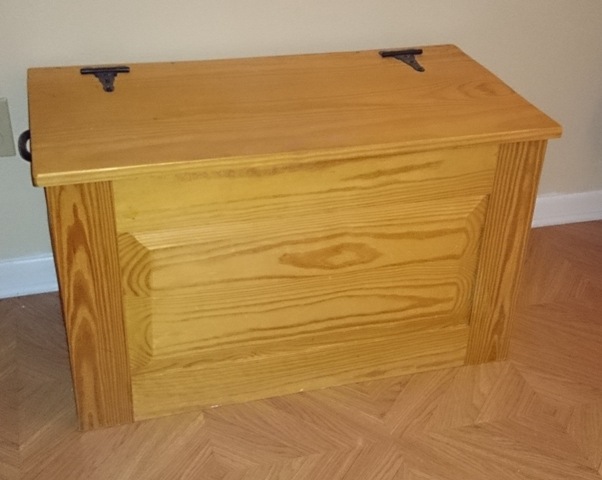
+1 about the workbench. While I completely understand that hardwoods look so much better than pine, most workbenches end up being banged, dented and maybe even have paints and solvents spilled on them don’t they?
I’d hate to spend the cash on quality wood for a workbench and then ruin it because I’m too lazy to put a sheet of ply down before I hammer something in. And yes, I’m too lazy to put that sheet of ply down. 🙂
Great blog post Tom.
I couldn’t agree more.
Pine gets a bad rap by “the experts” sometimes, but I think there are tons of applications where it is perfectly acceptable.
Here is an example of a revolving tool tray I built from Home Center Southern Yellow Pine (SYP), which was re-sawn and went together great.
http://lumberjocks.com/projects/81041
And another was my Breeze Machine http://lumberjocks.com/projects/70266.
It is inexpensive, easy to work and finishes nicely.
I’m a big fan.
I readily admit that pine is not one of my favorite woods to work with. I prefer the grains and colors of a variety of different hardwoods to it. That being said, when I added a leg vise to my bench I made it out of laminated yellow pine, which was a remnant of a support beams in the abbey church, I did receive a few comments that it was going to be too weak and wouldn’t last. The endurance test is a little too early for the vise, but the wood from which it is made are the primary and secondary supports holding up the roof. Studs in homes have been made from it for decades/centuries and log homes in some areas used it as the primary building material.
Certainly not my first choice, but I don’t see the point in sticking my nose up at it.
Pine is indeed fine, mighty fine! Avoid it at your peril, so much to luck.
I love using pine. Out west I get Sugar Pine really cheap, cheaper than any other wood, probably why I use it so often. But, seriously I love working with it.
Another good point is this: I often tell new woodworker to use Pine. 1, its cheap, so if you mess up its not like your out tons of cash 2. if your tools are not sharp, you will know it much faster with Pine. If you can build with Pine, being careful not to dent it, keeping tools sharp, and learn to finish it well, You can easily work with other woods that are much more forgiving.